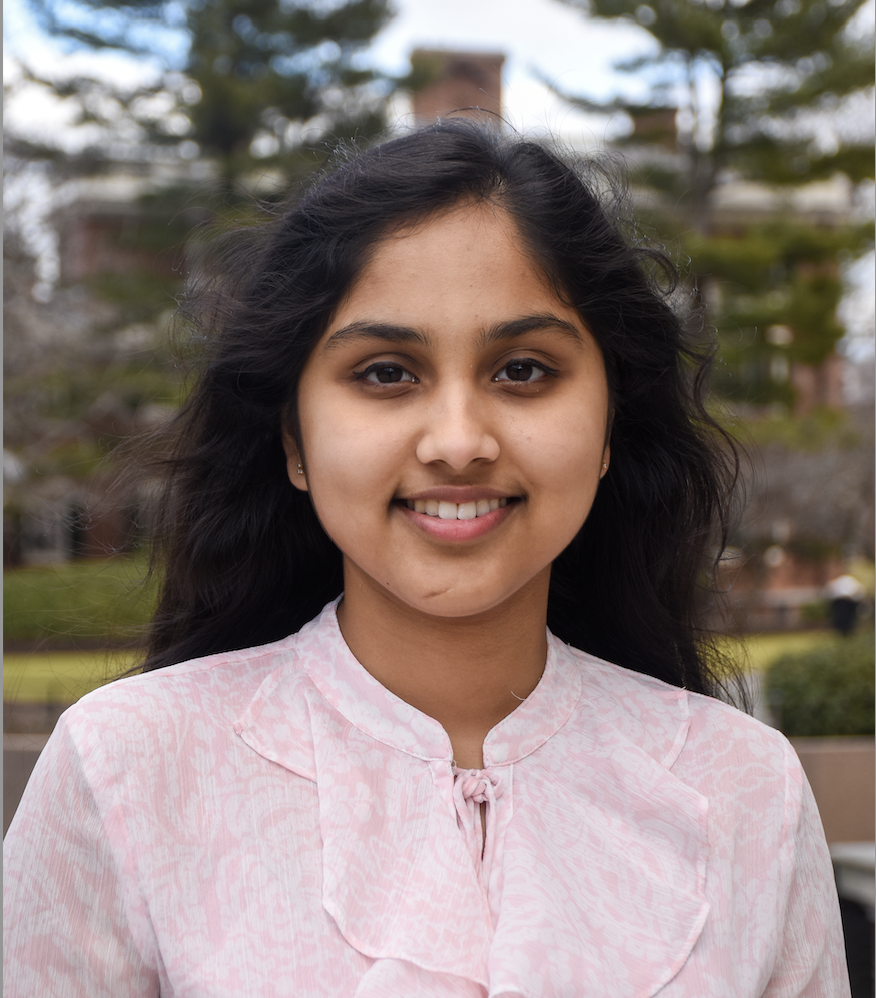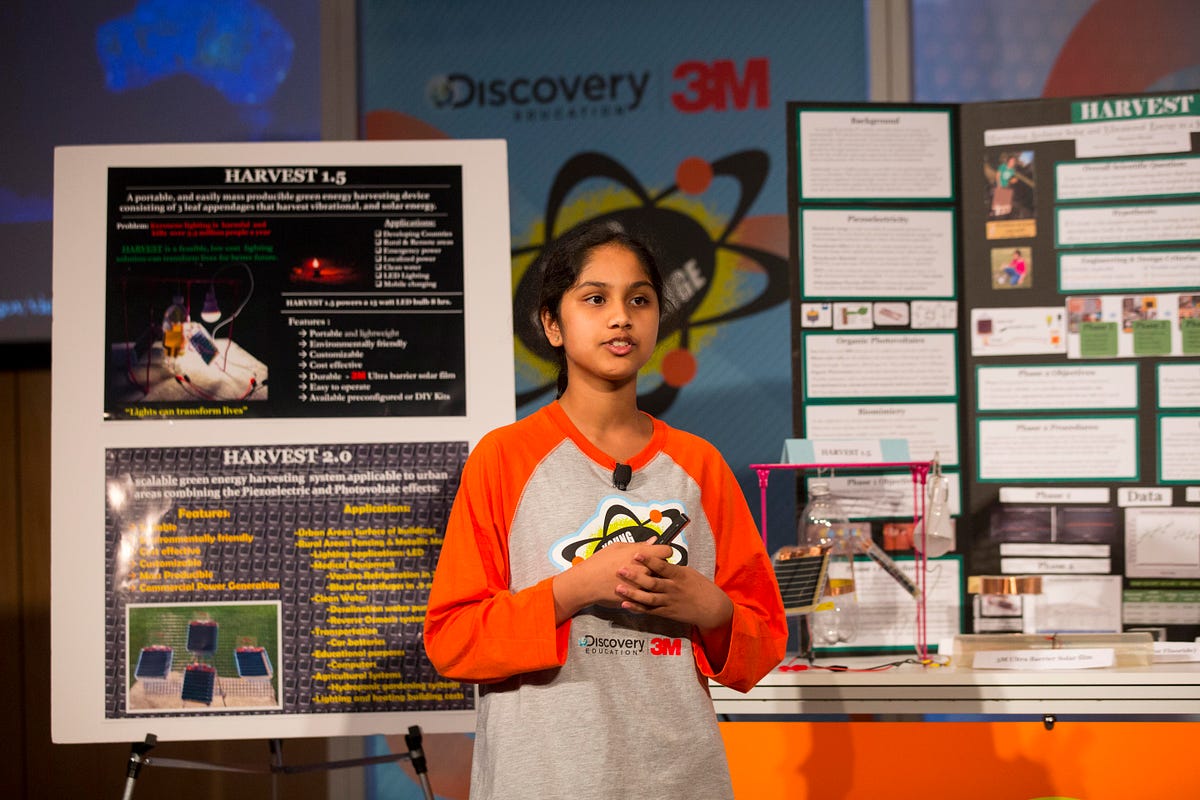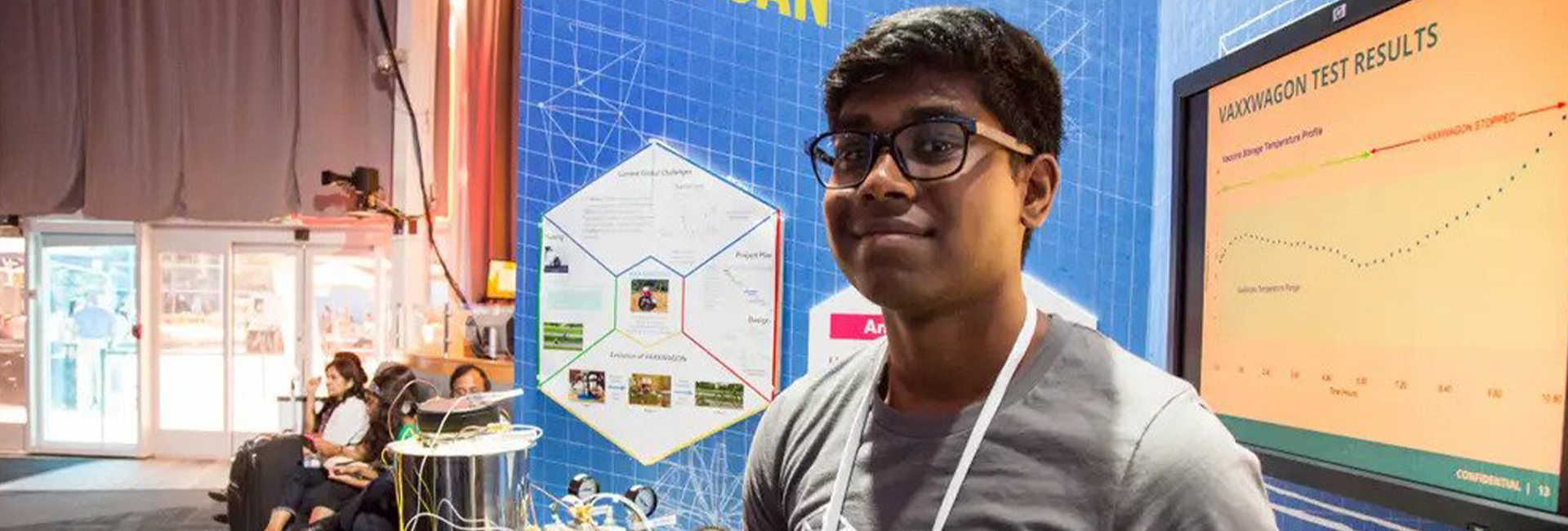(December 20, 2023) She was all of 14 when Ohio-born Maanasa Mendu made it to the Forbes 30 Under 30 list, making her the youngest person ever to achieve the feat. But behind this recognition was an invention that could be a potential answer to the global energy crisis. The same innovation won her the grand prize in the Discovery Education 3M Young Scientist Challenge and $25,000. It all began when she first visited her grandparents in rural India for her summer break, and witnessed persistent blackouts. Seeing children huddled over a single kerosene lamp made her sit up and take notice of the grave issue at hand, and decided to make a difference. That’s when she designed Harvest – an energy harvesting device that combines piezoelectric effect that harvests energy from sun, wind and precipitation.

Maanasa Mendu
The trip to India played an pivotal role in helping her search for answers. Upon her research, she spent hours at length digging deep into information and found that 88 percent of the energy supply comes from non-renewable sources, which are not only harmful to the environment but also depleting. A renewable source was the answer. However, its high cost played a spoiler. That’s when Maanasa decided to design an “inexpensive and potentially globally application energy solution.”
“Imagine a place where life ends after dark, where there are no electric lights for school work or refrigeration for perishables. This is not part of some dystopian society – it’s a part of our world today. Over 1.2 billion people lack access to electricity,” Maanasa said in TedX talk.
When she was 11 years old, she learned about something called the piezoelectric effect, which is when certain materials create electricity when pressure is applied. She discovered this while reading about a railway station in Japan with floors that produce electricity from people walking on them. This got her excited about finding a renewable energy solution.
After a year of researching and reading, she got the idea for a device shaped like a leaf that could harness energy from the wind and rain. The inspiration came to her while watching tree branches sway during a storm. These branches looked like piezoelectric materials to her—tiny devices that generate power through vibration. This motivated her to start working on her first design.


Initially, she wanted to focus only on using the wind for power, but she ended up creating a prototype that can harness energy from both the sun and the wind, as well as the vibrations from raindrops. Her device has three solar “leaves” that act like solar panels but also move with the wind and rain. She built the prototype using recycled materials for only $5. Her design won her the Discovery Education 3M Young Scientist Challenge.
“The issue with the energy crisis lies not in the fact that we lack ideas or solutions to solve it, but rather in the fact that we are unable to get these solutions to the people who need it the most,” said Maanasa.
When she started designing the device, she was only thinking about using the wind for energy, especially in cities where traditional wind turbines don’t work well. However, as she worked on it, she realized that there are other sources of untapped energy around us, like the sun and rain. She thought, “If my device only depends on one specific thing, the amount of power it produces might change throughout the day. But if it depends on multiple things, like how sunny it is, how fast the wind is blowing, and whether it’s raining, all these factors together could make a more steady source of power with more energy.”
Maanasa reveals that Harvest can power a 15watt LED bulb after three hours of charging. It took her three years to come up with Harvest, that has the potential to be the answer to the global energy crisis, and she says that it was curiosity that led her to the solution. Currently studying Neuroscience and Global Health and Health Policy at Harvard College, Maanasa is an aspiring physician and public health researcher. Apart from developing a renewable energy device to address energy poverty, she is also identifying video-based biomarkers for delirium, exploring heart-brain neural circuits in zebrafish, and studying cancer incidence among people with HIV in Botswana.
- Follow Maanasa Mendu on X




